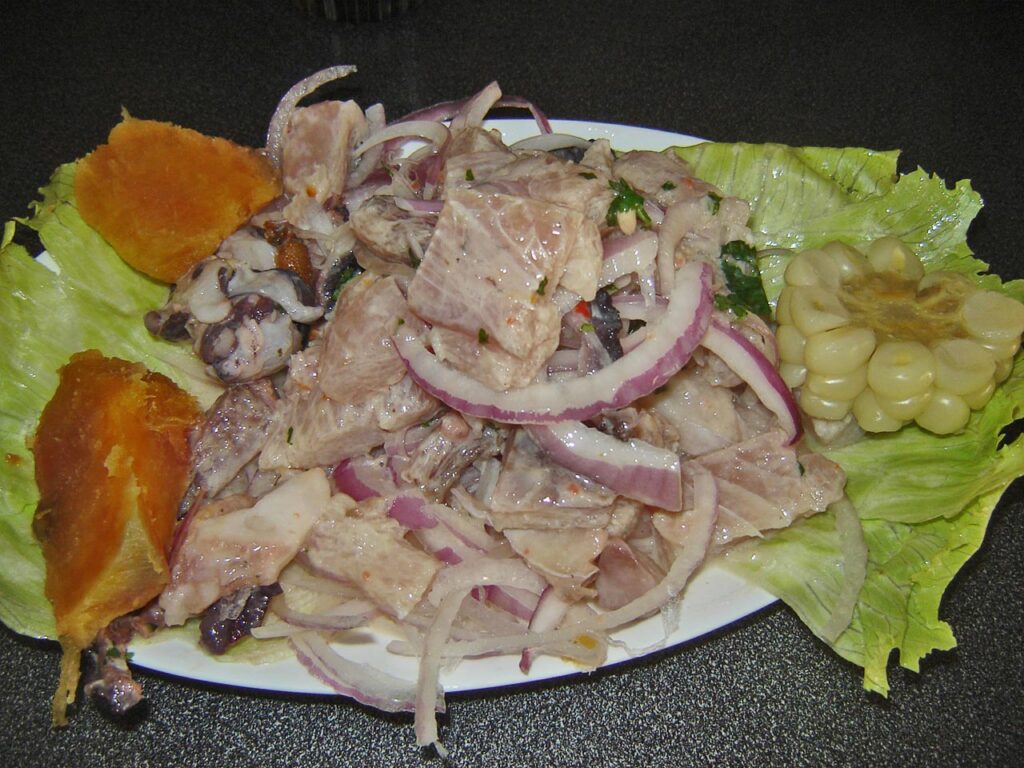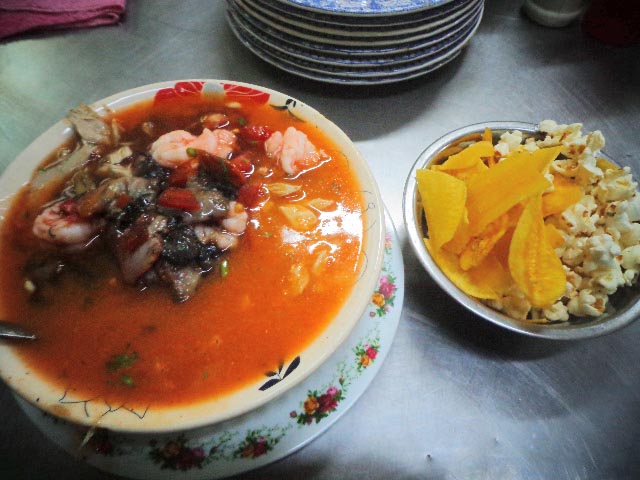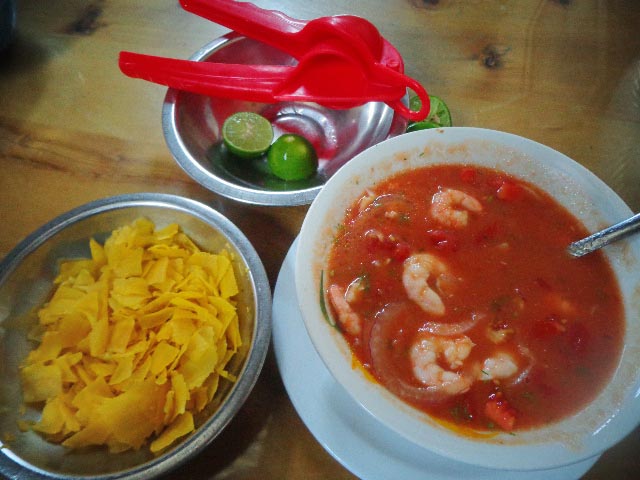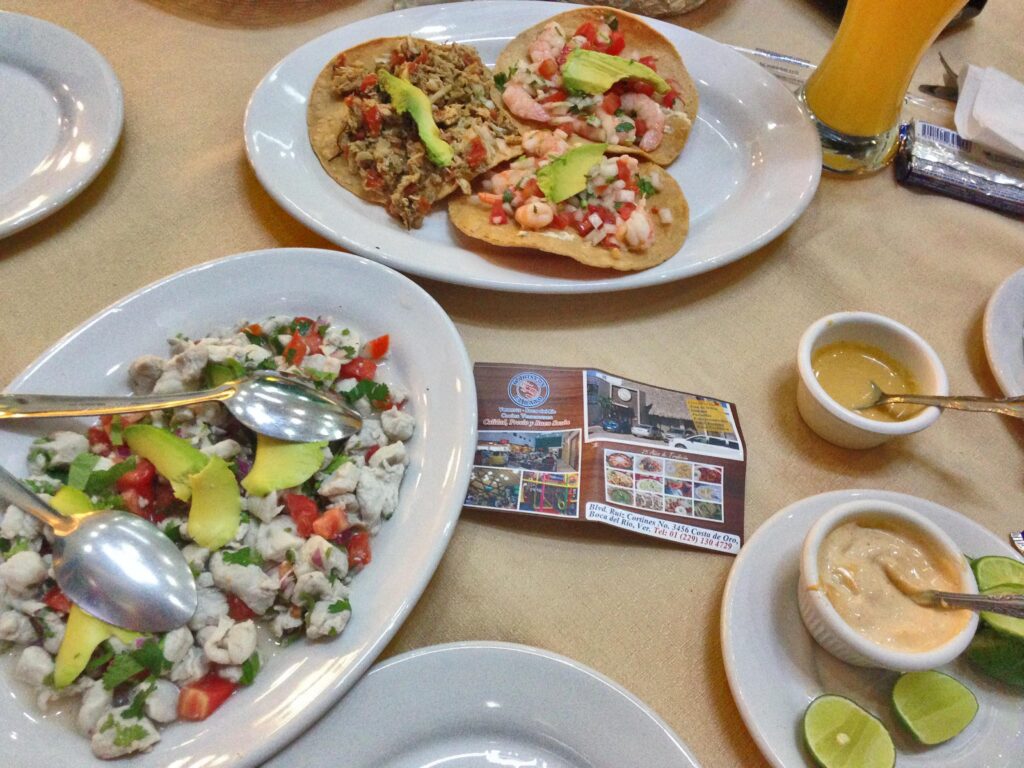Ceviche (seh-VEE-chay) — or, is it cebiche? — is one of Peru’s most famous culinary exports, although its origins are indeed a mystery. It might have stemmed from the Incas, who discovered that chicha, or fermented maize, could help preserve seafood. Perhaps it was the Spanish conquistadors from Andalusia, who introduced different citruses such as lime and orange to the region. And did the Japanese, after their first wave of emigration to Peru in 1899, lend a hand in ceviche’s modern-day presentation?
No matter who created it, ceviche is one of my all-time favorite seafood dishes. But, just like how pizza comes in many forms, the definition of ceviche is wide open to interpretation.
Though many countries in Latin America may make a claim to similar seaside fare, Peru’s is undoubtedly the most celebrated:

Whereas these days there are countless cevichería dotting Lima’s culinary scene, the classic way is to mix up diced fish, salt, chilies, red onion, and lime juice, with that last one added to cook the fish. Finally, place camote – sweet potato on one side, and corn on other.
And now the question you’ve all been wondering…what do you do with the spicy lime juice mixture after you’ve gulped down the ceviche? In Peru, that delicious stuff is called leche de tigre (tiger’s milk), and can be consumed as a shot; it’s often though of as a cure for resaca, or hangovers.
Now that we know about the standard ceviche, what could anyone possibly want to change with the recipe, especially with something called tiger’s milk?
On that note, let’s switch national capitals, from Lima, Peru to Quito, Ecuador. Ecuador has some really tasty meals, too, but their typical ceviche tends to have a tomato sauce-base (sometimes ketchup) and shrimp, and is served with popcorn and/or plantain chips:


What these two bowls might lack in aesthetic value, they more than made up for it in flavor! Still, ketchup in ceviche…I hope it was used sparingly. But, this does help me transition to the next country on our ceviche trip through Latin America, that being Mexico….
Why am I skipping over places like Colombia, Cuba, and Chile? Simple…I haven’t tried ceviche in them. Also, I could save the “three Cs” for another post. Gotta strategize here on No Work All Travel.
Moving on to Mexico, one of my top three food countries (thus far), I had a friend in the state of Veracruz who found great joy in showing off her country’s food. Who am I to argue? In the case of the first photo, we tried a marisquería (mariscos = seafood) called Mariscos El Bayo. On the menu, besides freshly caught crab, there were also shrimp ceviche tostadas (tostada = big toasted tortilla):

Whoa, whoa, now they’re taking the liquid aspect away, and instead placing a slice of avocado? Mixed feelings, to be sure.

Huh? Now, you’ve taken away the avocado, used a very sweet tomato sauce, but raised the bar with a whole glut of different seafood? That’s right, at Coctelería Cajun, in Ciudad del Carmen in the state of Campeche, shrimp and octopus are the norm. Can’t complain about that. Plus, it had oysters, crab, squid, and snail; no wonder it was called Vuelva a la Vida, or “{it} brings you back to life!”
Finally, for the sole upmarket entry on this list, we’ve got Agua & Sal, a cebichería located in the Polanco district of Mexico City. They have delectable Peruvian and Mexican offerings of ceviche, as well as separate fish and seafood dishes. Although I did try their Peruvian ceviche, and an excellent plate of scallops, this will serve highlight their cebiche a la leña:

Taking ceviche to another level, the leña, or firewood, lent a smoky, earthy flavor to the shrimp and róbalo, or sea bass, and the red onions and chile rayado (“striped chile,” a type of dried, smoked jalapeño) salsa provided the welcome heat. I would go back in a heartbeat to any of these six places, and Agua & Sal…is no exception.
I hope that you’ve learned a bit more about the varying styles of ceviche today. Maybe you could even share where you’ve had your best plate, no matter where in the world it was!

Leave a Reply